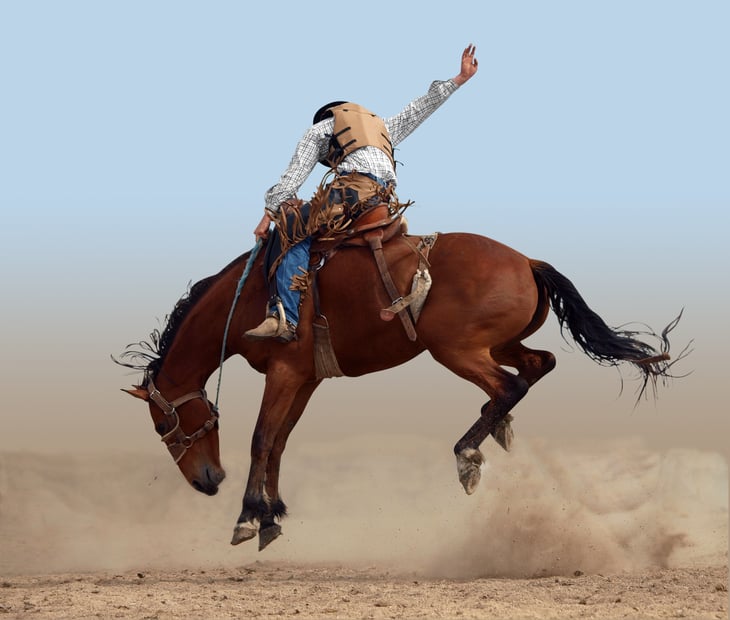
These days, there aren’t that many folks who still ride the fences for a living. But if you drive across the American West, you will come across plenty of rodeos where cowboys showcase their riding and roping skills and demonstrate that they are generally tough hombres.
When the dust settles on these events, there’s usually some cash for the winners of individual events and all-around cowboy. Competitors who rise to the top of national and international competitions can gallop off with upward of $1 million.
But it’s a long and risky road to riches. Amateur rodeo participants typically earn in the $10,000-$15,000 range annually, according to Cowboy Lifestyle Network.
In between the rags and the riches, there’s the steep cost of participating. The Idaho Press-Tribune reported that for a competitive cowboy — hitting, say, 75 to 100 rodeos in a year — earnings may barely cover fuel for the truck and entry fees, never mind travel expenses and the care and keeping of a horse.
If you can survive the cost — and deal with the risk of broken ribs, concussions and getting trampled by a 1-ton beast — then all you need to make a living this way is to master some of the following skills.
Bareback bronc riding
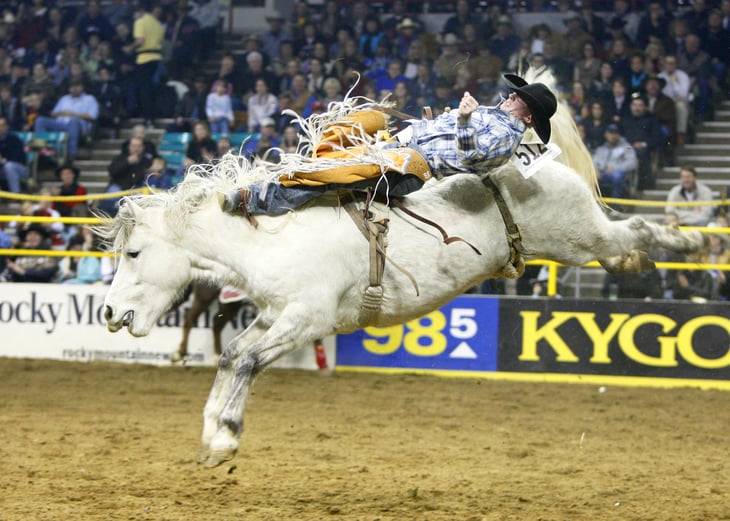
To boil it down, in this punishing event the rider must complete an eight-second ride on a thrashing animal, sans saddle, while holding on with just one hand. The rider is judged for control and “spurring technique,” according to this Thoughtco.com article on the basics, while the horse is scored on power, agility and speed.
This is pretty much the headliner at a rodeo, and it’s also where many of the injuries occur. According to Thoughtco.com:
Cowboys competing in bareback take a lot of punishment on their arms, necks, and backs due to the power and quickness of the horses. As a result, elbow, shoulder and neck injuries are particularly common.
There’s a saddle bronc riding event on the rodeo circuit as well.
Bull riding
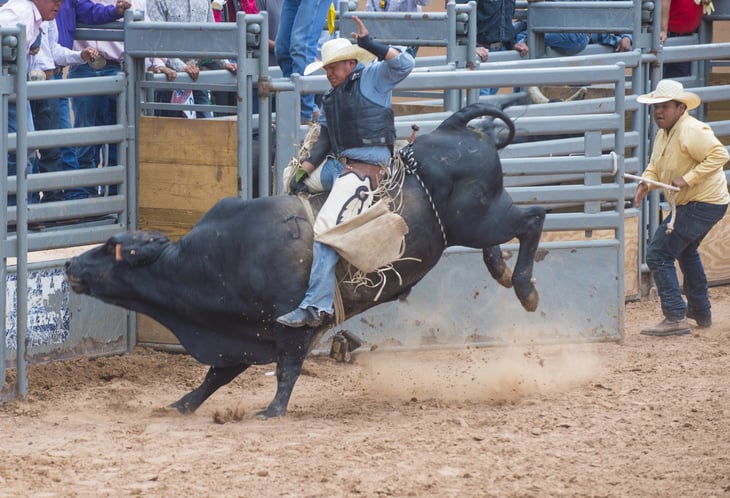
Bull riding, a”rough-stock” event like bronco riding. works by very similar rules — only swapping in a 1,500-pound animal bred for its bad temperament and the tendency to leap, buck and spin when a human is on its back. Aggressive breeding of these bulls has made them so formidable that the percentage of riders who manage to stay on for the eight-second qualifying time has plunged since the 1990s, according to a report in SBNation.
According to a study detailed in the journal Current Sports Medicine Reports, nearly half of rodeo injuries occur in this event. Many are relatively preventable — such as concussions — except that the industry has generally resisted the use of helmets and recovery guidelines.
Nowadays, bull riders can seek their fortunes in the dedicated Professional Bull Riding circuit. The current bull rider at No. 1 in the PBR 2018 world standings, Kaique Pacheco, has won nearly $370,000 — and the glory, of course. (The other big financial winners would be anyone who invested in PBR, which has seen staggering growth in revenues since its founding in 1992, Forbes reports.)
Barrel racing
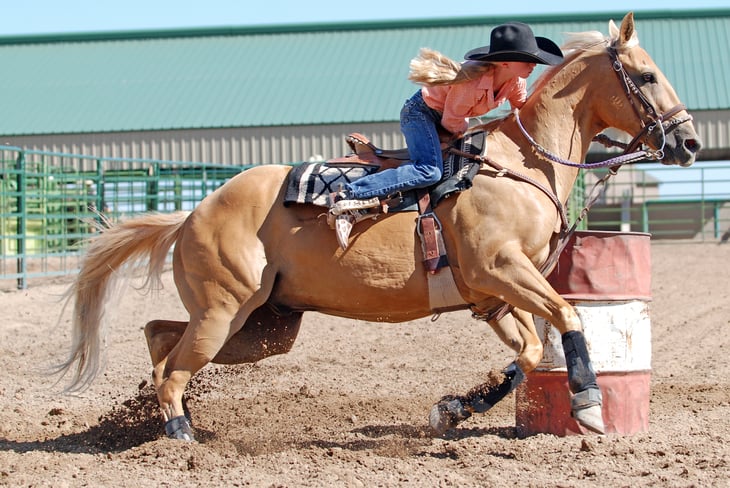
Barrel racing is a timed event that involves riding a tight clover-shaped course around barrels in the ring. It was originally created for women, but it’s open to all now, according to the International Barrel Racing Association.
This sport is fashionable — lots of sequins and rhinestones. According to Career Trend:
It’s also a highly competitive and professional sport, with times so close that a hundredth of second can make the difference between taking home a prize and being out of the money.
Global earnings determine a racer’s standing at the end of the season. Nellie Miller, the 2017 world champion barrel racer, won $177,962 for the year.
Steer wrestling
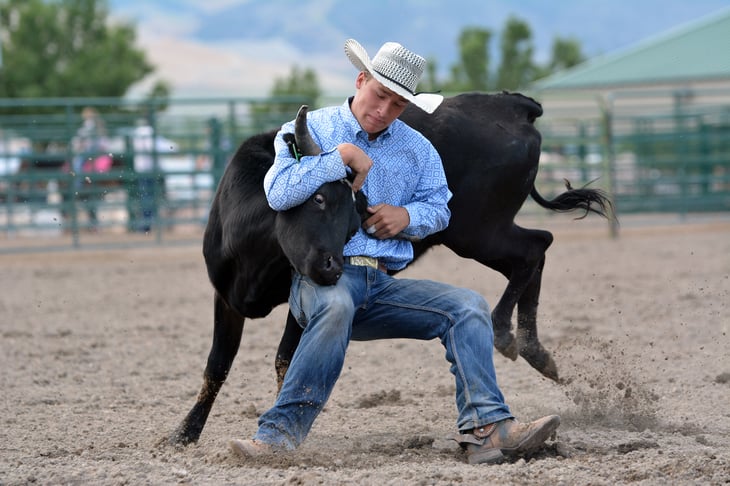
This may seem like a wacky way to make money, but it’s for real: The rider chases a steer, leaps onto the steer from the horse and then — assuming the cowboy survives that — he grabs the steer by the horns, pulls it off-balance and hauls it to the ground.
As you might imagine, injuries are common in this event.
Rodeo clown
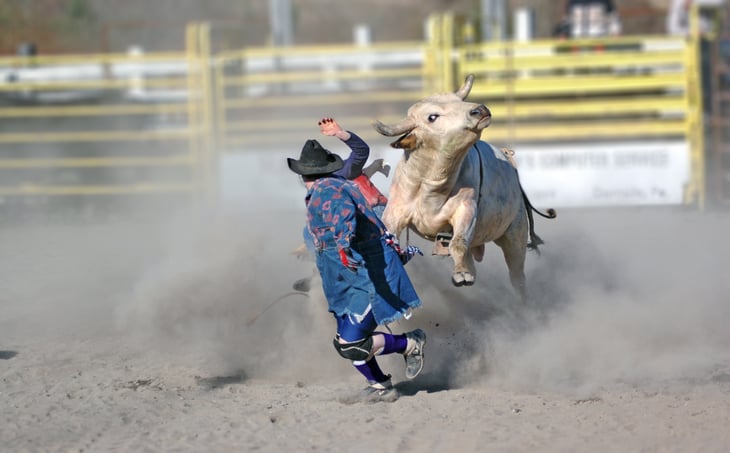
Being rodeo clown (sometimes called a rodeo bullfighter) is not just funny business. In addition to entertaining the rodeo fans with skits and high jinks, the clown’s job is to distract the angry bull so riders can safely flee the ring after falling. It takes a lot more athleticism than, say, tying animal balloons.
According to JobMonkey, a rodeo clown can make $100 to $500 per gig. Full-time — based on 60 to 100 events a year — adds up to $50,000 per year. The article recommends updating your health insurance before you sign on.
Calf roping
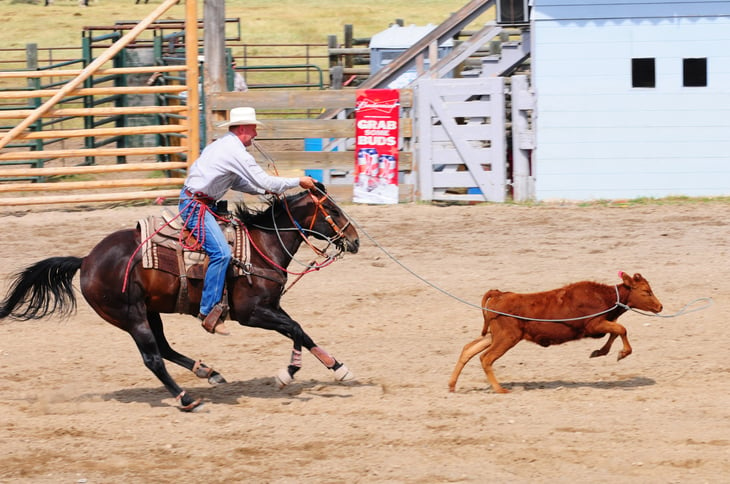
In this timed event, the rider has to combine speed, accuracy and flawless teamwork with his horse to rope and tie down the calf.
The mounted rider first must give the calf a specified head start before setting out in pursuit. Here’s the rest, as explained by the Professional Rodeo Cowboys Association:
The horse is trained to come to a stop as soon as the cowboy throws his loop and catches the calf. The cowboy then dismounts, sprints to the calf and throws it by hand, a maneuver called flanking. If the calf is not standing when the cowboy reaches it, he must allow the calf to get back on its feet before flanking it. After the calf is flanked, the roper ties any three legs together with a pigging string — a short, looped rope he clenches in his teeth during the run.
While the contestant is accomplishing all of that, his horse must pull back hard enough to eliminate any slack in the rope, but not so hard as to drag the calf.
When the roper finishes tying the calf, he throws his hands in the air as a signal that the run is completed. The roper then remounts his horse, rides forward to create slack in the rope and waits six seconds to see if the calf remains tied.
It’s easy to see how this sport emerged from ranching life. But critics argue that the sport is needlessly cruel to the 2- to 3-month-old calves, and very different from the way the animals are handled on an actual ranch.
Steer roping
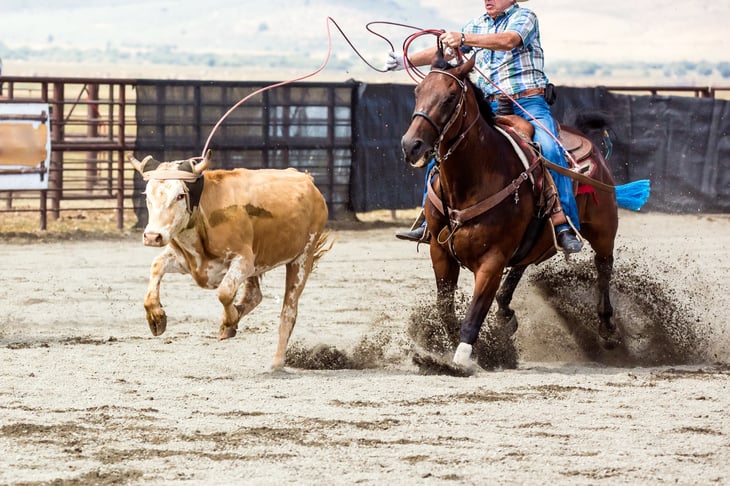
Once the rope is around the steer’s horns, a right-handed roper throws the slack of the rope over the steer’s right hip and then turns his horse to the left; when the rope comes tight, it pulls on the steer’s hip up and turns the steer’s head around, tripping or unbalancing the steer so that it falls.
Team roping
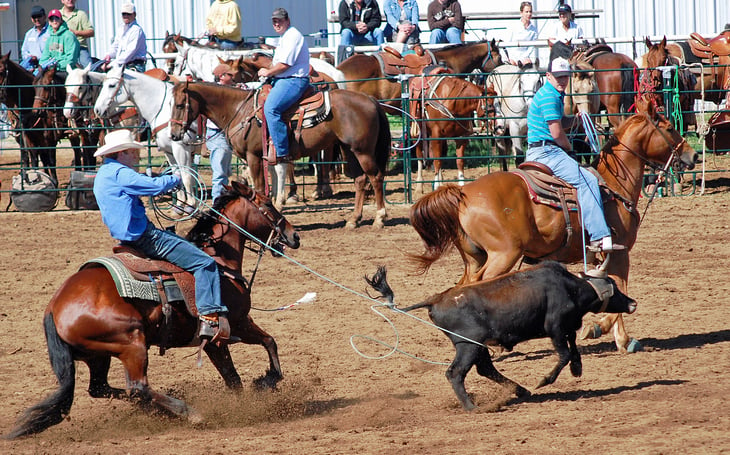
In team roping, two riders — a “header” and a “heeler” — work together to capture a steer. The Red Bluff Roundup Association offered a great explanation of how it works:
The header ropes first and must make one of three legal catches on the steer — around both horns, around one horn and the head or around the neck. Any other catch by the header is considered illegal and the team is disqualified. After the header makes his catch, he turns the steer to the left and exposes the steer’s hind legs to the heeler. The heeler then attempts to rope both hind legs. If he catches only one foot, the team is assessed a five-second penalty. After the cowboys catch the steer, the clock is stopped when there is no slack in their ropes and their horses face one another.
Team roping is the only rodeo event that men and women compete in together and one that allows the less-experienced to work on their roping skills. There’s a lot more to it than meets the eye — both for riders learning the skills and handling steers used in the competition. (If you’re geeking out like me, check out this article on buying roping steers.)
Ever been to the rodeo? Share with us in comments below or on our Facebook page.




Add a Comment
Our Policy: We welcome relevant and respectful comments in order to foster healthy and informative discussions. All other comments may be removed. Comments with links are automatically held for moderation.